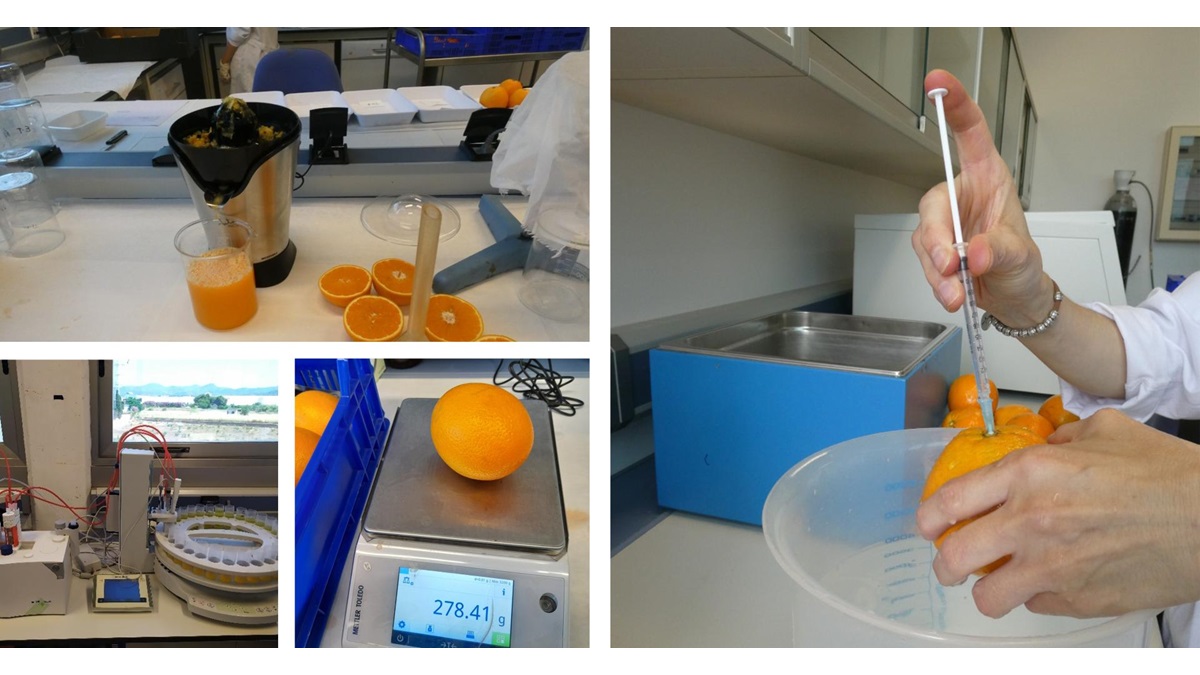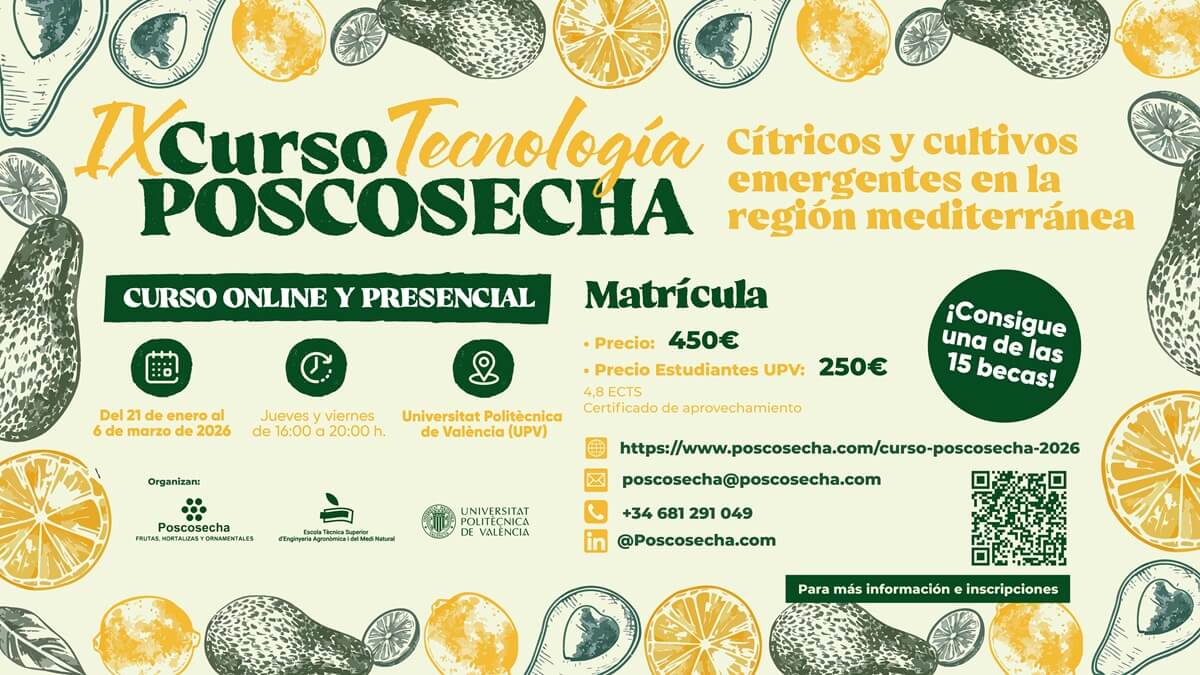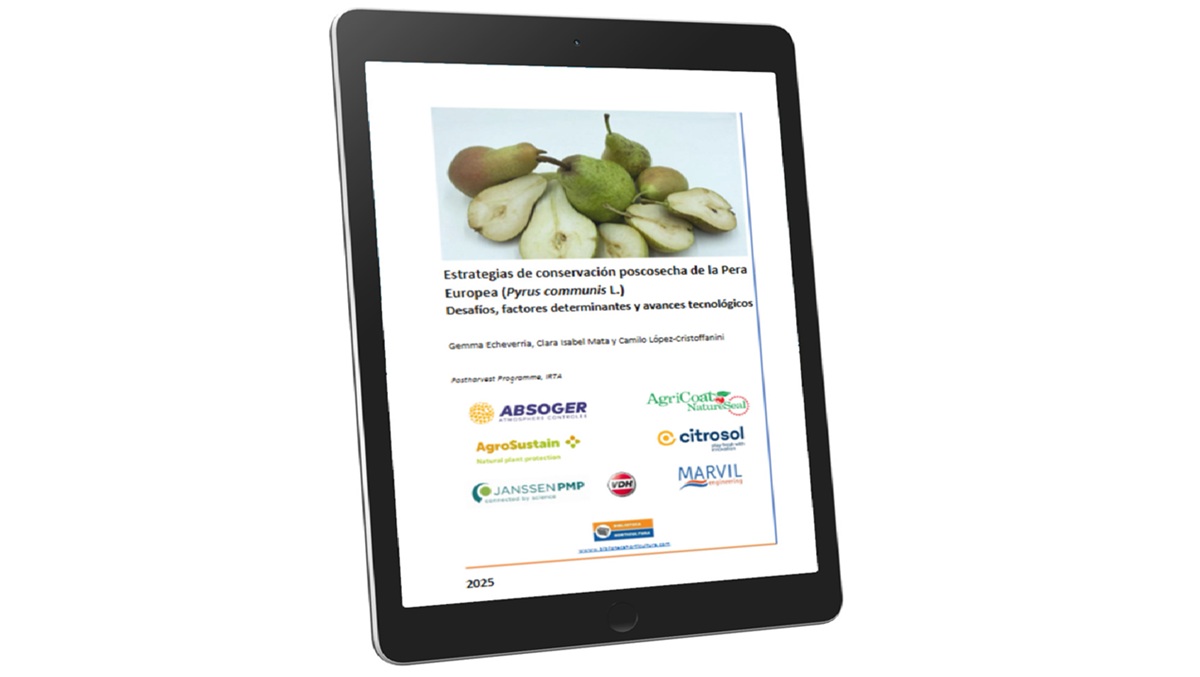Phytosanitaries
Benefits of Applying Commercial Coatings in Postharvest Citrus Fruits
Researchers at the Postharvest Technology Center (CTP) of IVIA highlight the benefits of applying commercial coatings in postharvest citrus fruits

Dr. María Bernardita Pérez-Gago, a researcher at the CTP, and Prof. Lluís Palou, the CTP Coordinator, led a research project demonstrating the undeniable benefits associated with the application of commercial coatings in postharvest citrus fruits. The trials were conducted on a semi-commercial scale at the CTP pilot plant and laboratories using three commercial coatings developed by companies within the Postharvest Cluster A.I.E.
The main objective of the research was to evaluate the ability of the coatings to extend the postharvest life of citrus fruits for fresh consumption, both at room temperature and under cold storage, as well as to determine the potential energy savings in citrus transportation resulting from the use of coatings compared to non-coated fruit. The study focused on 'Lanelate' oranges and assessed the physicochemical and sensory quality of the coated fruit compared to the control (non-coated) fruit under various postharvest storage scenarios:
- 30 days of cold storage at 1ºC and 90% RH plus 7 days of shelf life at 20ºC,
- 15 days at 20ºC and 70% RH, and
- 12 days at 8ºC and 90% RH for coated fruit and 5ºC and 90% RH for non-coated fruit (simulated transportation conditions).
The following quality attributes were measured: weight loss (%), firmness (% deformation), peel color (Color Index, CI = 1000a / Lb), instrumental gloss (G.U., gloss units), juice yield (%), juice quality [soluble solids content (SSC, °Brix), pH, titratable acidity (TA, % citric acid), and maturity index (SSC/TA)], external physiological disorders (chilling injury, "pixat," peel collapse, etc.), decay incidence (natural infection), internal atmosphere (% CO2 and O2 inside the fruit), volatiles (ethanol and acetaldehyde content in juice, mg/L), and sensory quality (overall flavor, off-flavors, external visual appearance, and gloss ranking).
The results clearly demonstrated the effectiveness of the three coatings tested in reducing weight loss and maintaining firmness, regulating gas and water vapor exchange, and adding gloss to the coated oranges during both ambient temperature storage and cold storage, without negatively impacting other instrumental and sensory quality attributes. Additionally, the study confirmed the feasibility of using these coatings to transport oranges to nearby export markets at a higher temperature than commercially established, potentially leading to energy savings in transportation for citrus marketers.
Overall, these results obtained with 'Lanelate' oranges apply to any commercially marketed fresh citrus variety. It can be concluded that the various coatings tested effectively maintain the postharvest quality of citrus fruits, enabling longer shelf life and extended storage and marketing periods. This can lead to better positioning in export markets and even the opening of new, more demanding markets, thus clearly improving the sector's competitiveness.
The full report of the results can be found in the IVIA repository here.
Related news



.jpg)








